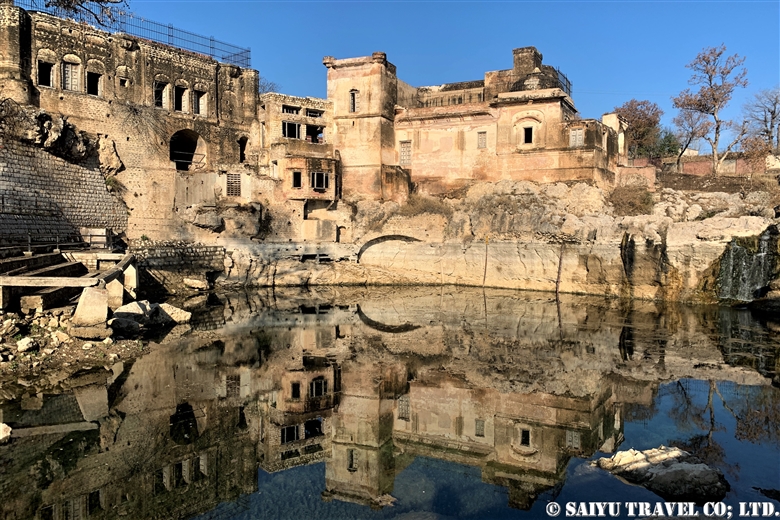
Surprisingly, in the Islamic Republic of Pakistan, there are still some Hindu pilgrimage sites. Nani Mandir of Balochistan and the Chandragup Mud Volcano, which I have introduced in earlier blogs, are examples of these remaining pilgrimage sites. Until 1947, when India and Pakistan separated and became independent (from the British Indian Empire), many Hindus lived in Pakistan at the time.
The Katas Raj Temple is a Hindu temple complex located on the Potohar Plateau in the Salt Range of the Punjab Province. Several temples are surround a sacred pond called Amrit Kund. The beautiful waters of Amrit Kund are found in the stories of Indian mythology. The story goes that the lake was made from the tears shed from the Lord Shiva after his first wife, Sati, died and he was inconsolable.
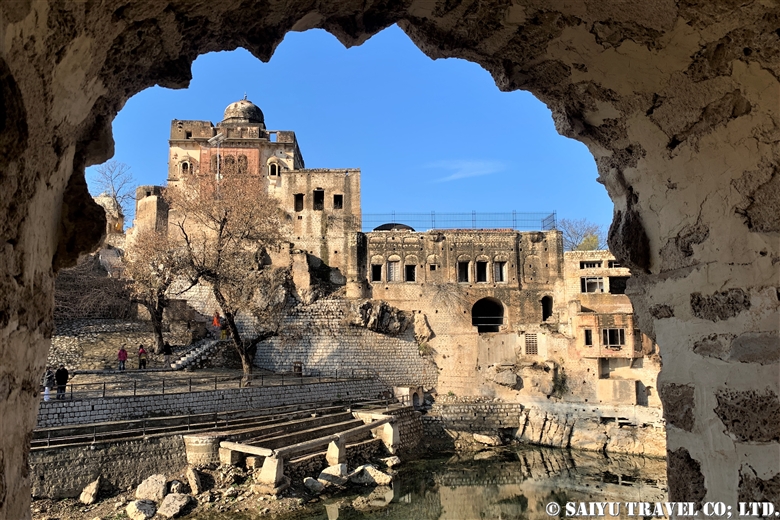
In 2005, the Deputy Prime Minister, L.K. Advani visited the Temple, and noting the decaying appearance of it at that time, the Pakistani Government started cleaning up the holy pond and repairing the buildings in 2006. However, even though the lake had been cleaned up by 2012, the water levels suddenly dropped. There was a big lawsuit against a nearby cement company which was found to be the cause in the drop in water levels. Although water levels have recovered a little, it has not returned to its original state since.
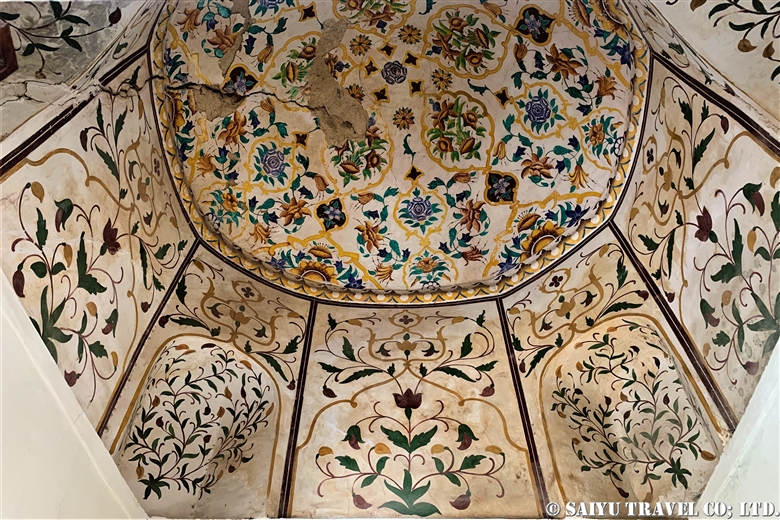
The ceiling of the Baradari (Pavillion) near Amrit Kund was in the process of being restored. The pattens of plants have been redrawn, with a notable influence of Islamic design.
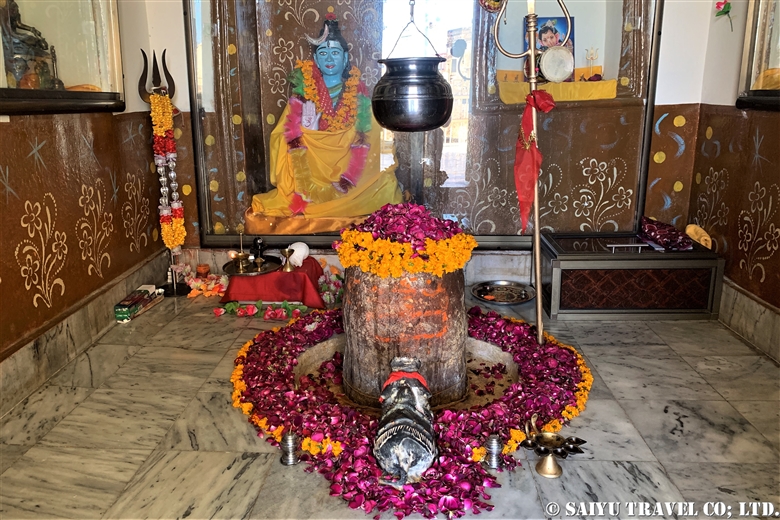
Near the holy pond, a special Shiva Temple enshrines the Lord Shiva. The priest told us, “Although the COVID-19 Pandemic has decreased the number of pilgrims, we expect more people from Pakistan to come during the next Maha Shivaratri Festival.”

This is inside one of the rooms of the Hanuman Temple, part of the complex. Some of the old murals remain intact.

From one of the Hindu mythological stories, taken from “Ramayana” seems to be represented in this mural. It looks like an army of monkeys was engraved here. It seems that the faces have been scraped off.

The image of Ganesha is painted on a wall of the Hanuman Temple.
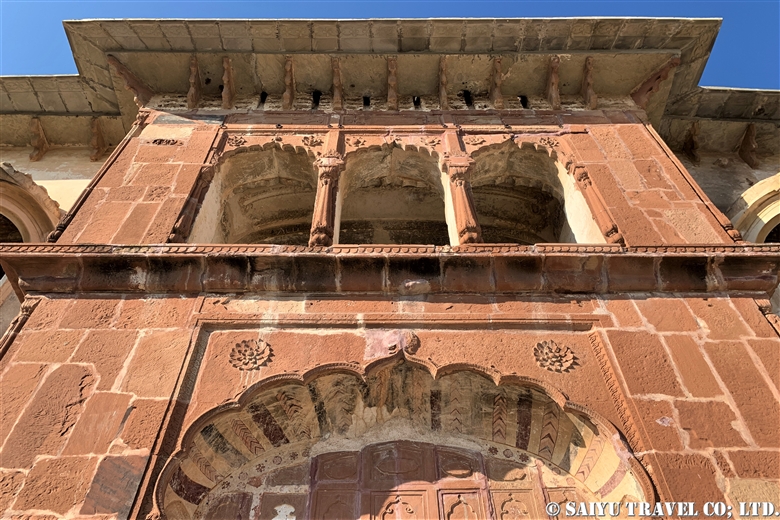
The Shree Rama Chandra Temple was restored on the outside. However, the interior was still in need of restoration.
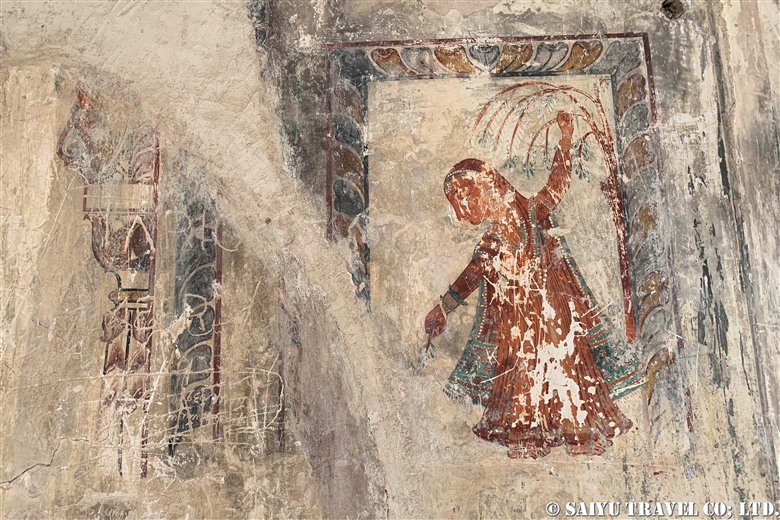
This is one of the mural paintings on the second floor of the Shree Rama Chandra Temple. It has a very typical Indian look.
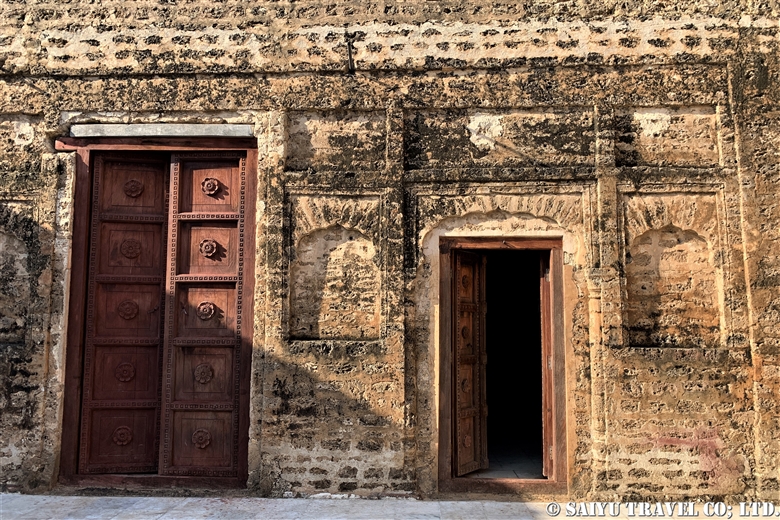
The Hindu Temple Complex was also the home (haveli) of Hari Singh. He was the last monarch of the Princely State of Kashmir and Jammu, who decided to assign Jammu and Kashmir to India on October 26, 1947, with the separation of India and Pakistan. At that time, the ruling class in Jammu and Kashmir was Hindu, but most of the residents were Muslims, so it was a very difficult decision to make for Hari Singh. However, there was an invasion of Pakistani troops for which he needed the support to fight them, so he decided to ally with India.
The courtyard and outside of the building are fairly simple, and were in the process of being restored.
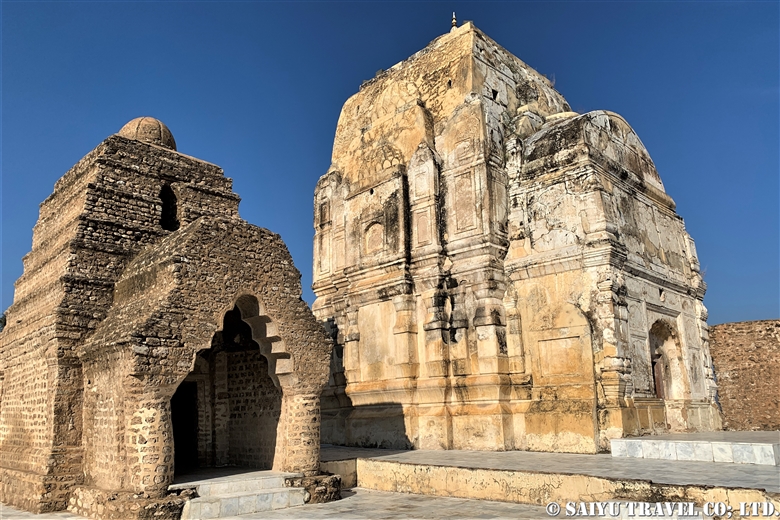
At the top of the Complex hill is the Sat Ghara Temple. It is a thick stone building.
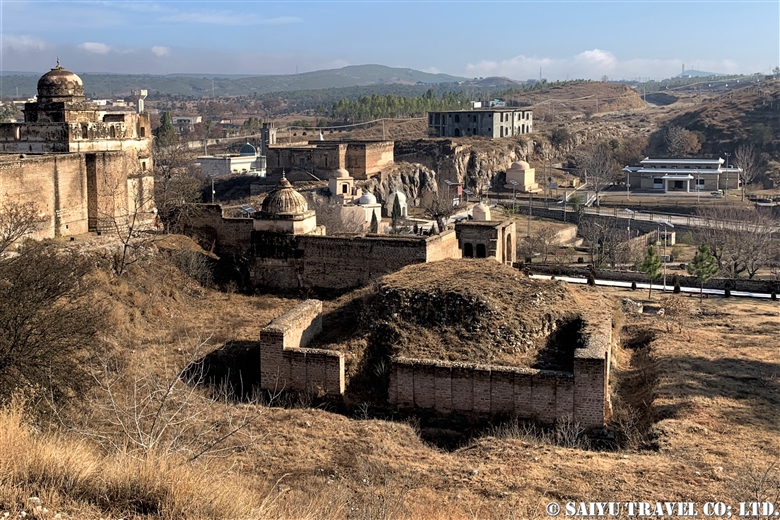
Just downhill from the Sat Ghara Temple, are the remains of a stupa. It was hard for me to believe it when I heard it, but an investigation was conducted by the British archeologist Alexander Cunningham, which concluded that the pagoda was made during the time of King Ashoka in the 3rd century BC. Once the Gandhara culture declined, the Hindu Temples of Katas Raj were build during the prosperous Hindu culture in between the years of 7th – 10th centuries.
You can stroll around the temples yourself, but if you request a guide at the entrance, you can also see inside the temples that are normally locked, so I recommend you take the tour with the guide!
Photo & text: Mariko SAWADA
Visit: Jan 2022, Chakwal, Punjab
Tag : Pakistan Travel Blog , Pothohar Plateau , Indus Caravan , Katas Raj Temple , Amrit Kund , Shree Rama Chandra Temple , Saiyu Travel Pakistan , Hari Singh Haveli , Sat Ghara Temple , Pakistan Travel company , Pakistan tour operator , Pakistan Photography Tour , Hindu Temple in Pakistan , Pakistan Blog , Salt Range






